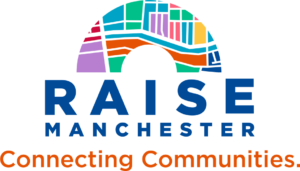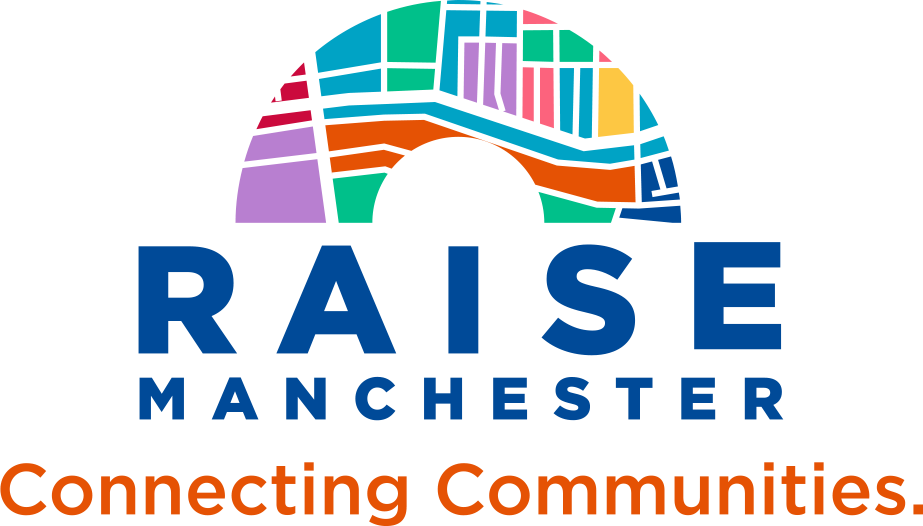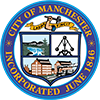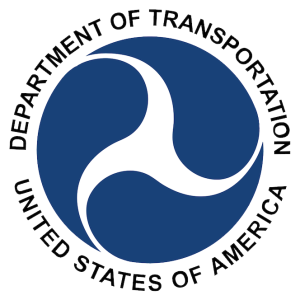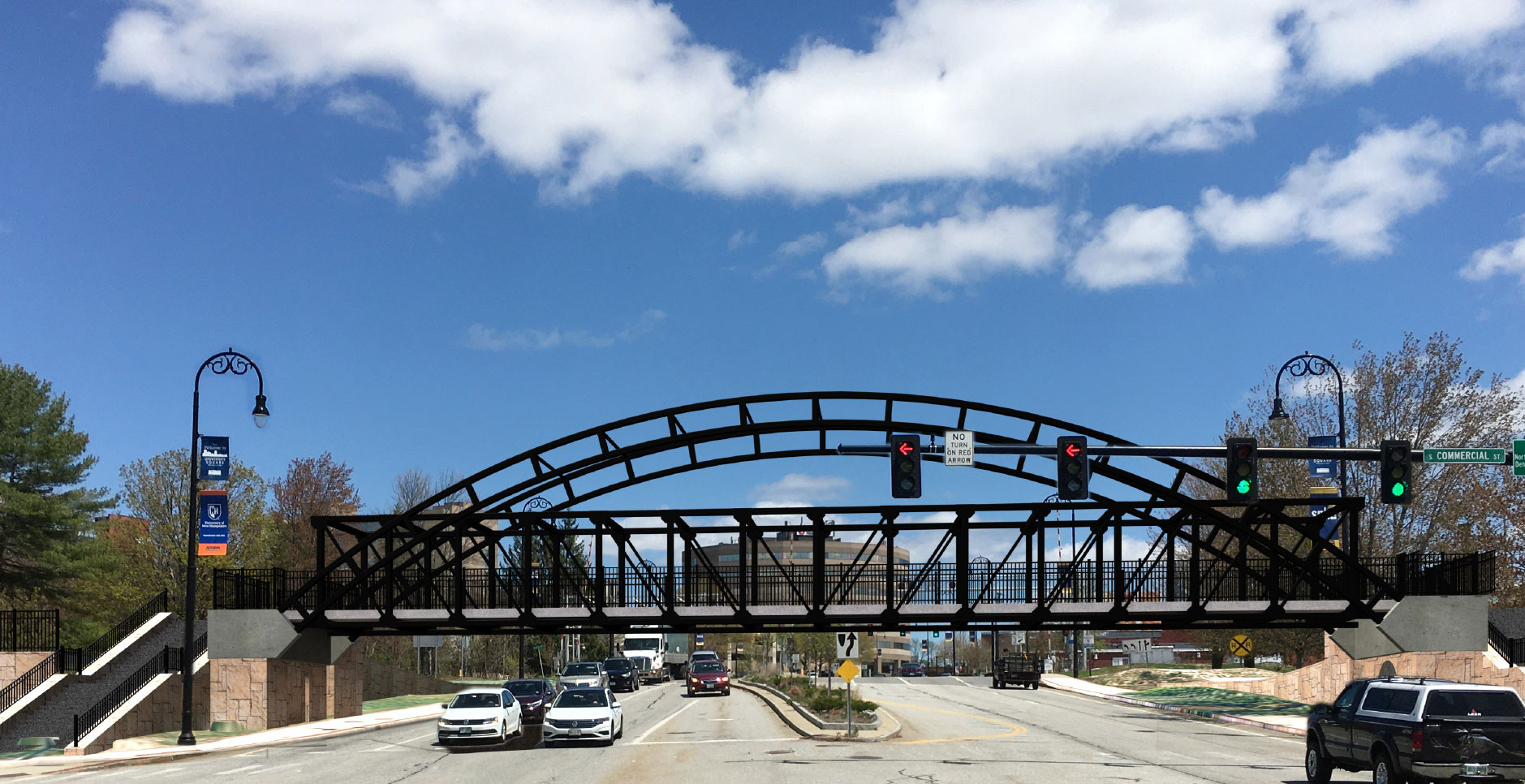
Original post can be viewed here.
MANCHESTER, NH – Preliminary design plans for the city’s RAISE Manchester: Connecting Communities project are being finalized and are expected to be submitted to the Federal Highway Administration in April.
The $30 million project, in the works since 2019 and receiving federal funding in 2021, will improve pedestrian and bicycle access downtown, connect neighborhoods long cut off by road development, and lay the groundwork for the city’s ambitious Manchester Transit Oriented Development Plan.
Along with preliminary design plans, permits for environmental, historical and archeological resources are being finalized, said Kristen Clarke, Manchester Department of Public Works traffic engineer and RAISE Manchester project manager.
“We anticipate a follow-up presentation in the spring to provide an update on project design, as well as ways in which the project has incorporated feedback from the December meeting,” Clarke said in an interview with Manchester InkLink.
Last December’s meeting sought community input on the project, and the project’s website also seeks input from the community.
“The biggest area we have received comments are from the bicycling and pedestrian advocates who have made suggestions about the location and configuration,” Clarke said.
Connecting and Connections
Aside from added accessibility for area residents, the project is also a step toward the bigger goal of redeveloping the south end of downtown through the Manchester Transit-Oriented Development Plan. The plan could generate up to $588 million worth of development through new construction and renovation of existing buildings that would house office, retail and residential space. A TOD focuses on compact pedestrian-friendly, mixed-use communities that are connected to transportation options (highways, commuter rail, and the like).
“Transit-oriented communities create better access to jobs, housing, and opportunity for people of all ages, abilities, and incomes,” the city’s September 2020 plan says. “Successful transit-oriented communities provide people from all walks of life with new lifestyle options.”
The first move toward the Manchester TOD becoming reality is making downtown’s south end more easily traveled by pedestrians, bicyclists and cars.
“We’re excited about the multi-modal connections this project will provide,” Clarke said.
The South Millyard, where the city’s rail yard once was, has for much of Manchester’s history, been an industrial area. It was disconnected from the Millyard, as well as major surrounding roadways, as the city’s streetscape evolved.
“Improving transportation infrastructure for pedestrians, bicycles, cars, trucks and transit vehicles reconnects these areas and makes them accessible to all,” Clarke said.
There are vacant and underused parcels in the project area, as well as surrounding areas, that could be developed; providing transportation access is critical to making the area more desirable to developers, Clarke said.
“There are roadways with no sidewalks that will get thousands of feet of new sidewalk. There are gaps in our citywide and regional bicycling facility network (including rail trails) that will now be connected,” she said. “There is no roadway that connects across the railroad tracks to the west of Elm Street, which forces all traffic entering the City on Granite Street to proceed east to Elm and then enter the street grid. This project will fill all those gaps and give travelers, by whatever means they travel, more choices of route and direct connections.”
The project will also complete a leg of the Granite State Rail Trail that connects to Londonderry near the airport. The project will also connect the trail to the Riverwalk, which in turn connects to the Piscataquog Rail Trail to Goffstown.
Clarke said that everything created as part of the RAISE Manchester project “will be universally accessible to folks with all levels of mobility.”
Next Steps
The project is funded by a $25 million U.S. Department of Transportation grant, as well as a $5 million local match.
The project started with a 2019 community charette that determined what direction the project should take. Clarke said that three rounds of grant process streamlined the timeline. The grant requires that the project be ready for construction by September 2024, and completed by 2029.
Clarke said that further funding needs will be addressed “as the design is furthered and more detailed cost estimates are developed.”
The main components of the project are:
- A pedestrian bridge over Granite Street that connects Commercial and South Commercial streets.
- A new South Commercial Street Extension and multimodal (car, bike, pedestrian) bridge over the railroad tracks behind Northeast Delta Dental Stadium that will improve the connection between the east and west sides of the tracks, alleviate traffic congestion on Granite Street during peak times and provide alternative access to Elm Street.
- Gas Street Extension, a roadway connector and multimodal bridge between where South Commercial Street Extension meets Elm Street, which will cross over the abandoned railroad right-of-way to Willow Street. The city will convert the railroad right-of-way to a paved rail trail for bicycle and pedestrian use.
- A “peanut roundabout” at the intersection of South Willow Street and Queen City Avenue, replacing a signalized intersection, to improve mobility and safety. (Peanut refers to the shape of the roundabout.)
